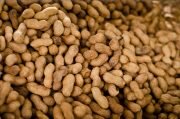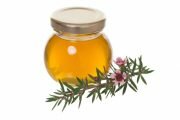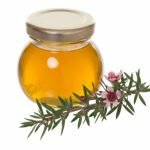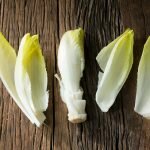Watercress Beats Kale As A Powerhouse Superfood
Let’s be honest, the term “superfood” has lost its sparkle a little bit, with celebrity chefs tossing it around like it’s a hot potato and nutritional fads coming and going faster than you can say “make mine with crispy kale on the side”.
One day it’s broccoli that could help protect against prostate cancer and impotence, the next it’s cabbage soup that is the be-all and end-all of everything healthy.
Don’t get me wrong, I’m not saying that the health benefits of eating superfoods fall into the “fake news” category. Not at all.
But how do you compare the health benefits of superfoods?
Green with envy
Recently, researchers at William Paterson University in New Jersey asked exactly the same question. And as a result, they produced a list of 41 “powerhouse fruits and vegetables” ranked by the amounts of 17 critical nutrients they contain.
For their study, published in the journal Preventing Chronic Disease, the researchers scored different superfoods according to the amount of fibre, potassium, protein, calcium, folate, vitamin B12, vitamin A and vitamin D (and a host of other critical health-giving nutrients) contained in each individual food.
In order to make it onto the powerhouse superfood list, the researchers calculated each fruit or vegetable’s nutrient density score based on the percentage of your daily need for each nutrient the food provides.
Commenting on the study, lead researcher, Jennifer Di Noia, an Associate Professor of Sociology, said: “Nutrient profiling is not new. But applications to fruits and vegetables are limited. This is the first classification scheme of which I am aware to define and rank [powerhouse fruits and vegetables]”.
The researchers assumed a 2,000 calorie diet per day, consuming 100 grams of each food. The scores were capped to ensure fruit or vegetables that provide a high amount of only one single nutrient didn’t get a disproportionately high overall score — using a score of 100 to be the highest.
Now, some of their results are a bit surprising. Watercress — long known as a superfood — scored a perfect 100, followed by Chinese cabbage (91.99), chard (89.27), beet greens (87.08), spinach (86.43) and chicory (73.36).
So, no broccoli in the top five… or kale?
In fact, of the six foods that didn’t make the list, four were fruits: raspberries, tangerines, cranberries and blueberries… the other two were garlic and onions.
Professor Di Noia explained that the reason for the relatively poor performance of berries, for example, is that they are rich in phytochemicals, which are non-essential nutrients despite their protective or disease preventive properties. She added: “Since there are no uniform data on food phytochemicals and recommended intake amounts for these compounds are lacking, this particular study only focussed on scoring essential nutrients.”
Of course, these results don’t mean that you now have to throw out every fruit and vegetable that doesn’t resemble watercress or chicory. I think it simply shows that when it comes to giving yourself a super nutrient-boost, some foods will pack a much bigger punch than others.
As always, balance is key… so keep the berries, broccoli and kale coming.
Did you find this information useful?
Then why not get more expert health recommendations just like this delivered direct to your inbox?
"It is truly refreshing to read a newsletter on the topic of alternative medicine which is scientifically based and reviewed by professionals..." - Robert Sinott
We respect your privacy and will never share your details with anyone else.Disclaimer: Bear in mind the material contained in this article is provided for information purposes only. We are not addressing anyone’s personal situation. Please consult with your own physician before acting on any recommendations contained herein.
Sources:
You’ll Never Guess What Veggie Just Beat Kale!, published online 16.06.14, foodmatters.com
- Comments (0)
- Facebook Comments (0)












